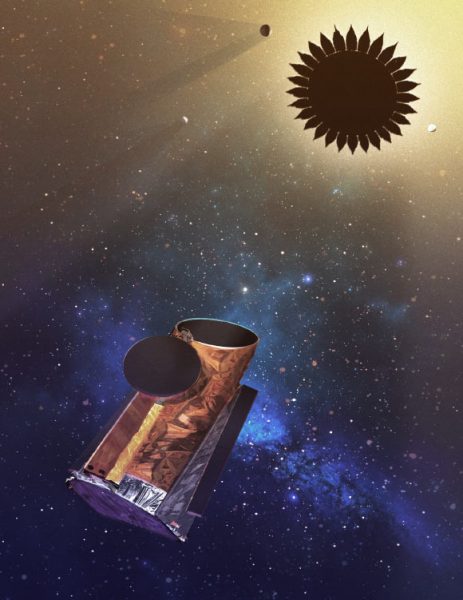HabEx: New Mission Proposed to Search for Second Earth | Astronomy – Sci-News.com
The Habitable Exoplanet Observatory (HabEx) would use a telescope with a mirror larger than Hubble’s, and would employ origami techniques to utilize an external ‘starshade,’ which would block the light from target stars and enable the search for and characterization of Earth-like exoplanets around them.

HabEx, a space telescope with ultraviolet (UV), optical, and near-infrared (near-IR) imaging and spectroscopic capabilities, will have three primary science goals: (I) seek out nearby worlds and explore their habitability; (ii) map out nearby planetary systems and understand the diversity of the worlds they contain; (iii) enable new explorations of astrophysical systems from our own Solar System to galaxies and the Universe by extending our reach in the UV through near-IR. Image credit: Gaudi et al.
“Our goal is to see if we can find a planet that is similar to Earth — one that can support life,” said Professor Scott Gaudi, a researcher at Ohio State University.
“While we’ve identified a number of planets outside our Solar System, so far, none have conclusively been shown to have the elements necessary for habitability.”
“The HabEx mission would be the next logical step in the search for planets similar to our Earth.”
HabEx would have a mirror that is 4 m wide — as compared to Hubble’s 2.4-m mirror — and would be used in conjunction with a starshade to search the skies for light from other planets.
“That light is typically drowned out by brighter light from nearby stars, including our Sun,” Professor Gaudi explained.
But HabEx would deflect starlight using the starshade — a 52-m flower-shaped disk that would go into space folded origami-like into a tight spiral.
The starshade would unfold once the satellite reached its orbit and fly nearly 77,000 km from the telescope, blocking light from stars but allowing light reflecting off other planets to reach the telescope’s instruments.
HabEx would then search nearby Sun-like stars for signs of planets that have water or carbon dioxide — two signs that a planet might be habitable.
The telescope would also have a camera that could take pictures of nearby planetary systems.
“Those pictures would be the first family portraits of those systems,” Professor Gaudi said.
HabEx would have additional instrumentation as well, including a coronagraph, a piece of equipment that can also characterize planets outside our Solar System and record images of them.
The project is one of four mission concepts proposed by NASA to be ‘the next Great Observatory’ — a large-scale mission that will play an important role in the space science the United States invests in over the next decade.
The federal Decadal Survey intends to make its recommendation on which project should receive funding by 2021.
If prioritized, the HabEx mission will launch in the 2030s. It is estimated to cost about $7 billion over 10 years.
Professor Gaudi and his colleagues from MIT and NASA’s Jet Propulsion Laboratory presented the mission concept on December 13 at the AGU Fall Meeting 2019 in San Francisco, CA.
_____
Bernard Scott Gaudi et al. The Habitable Exoplanet Observatory (HabEx). AGU Fall Meeting 2019, abstract # P52A-01





